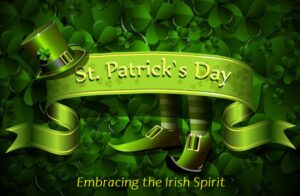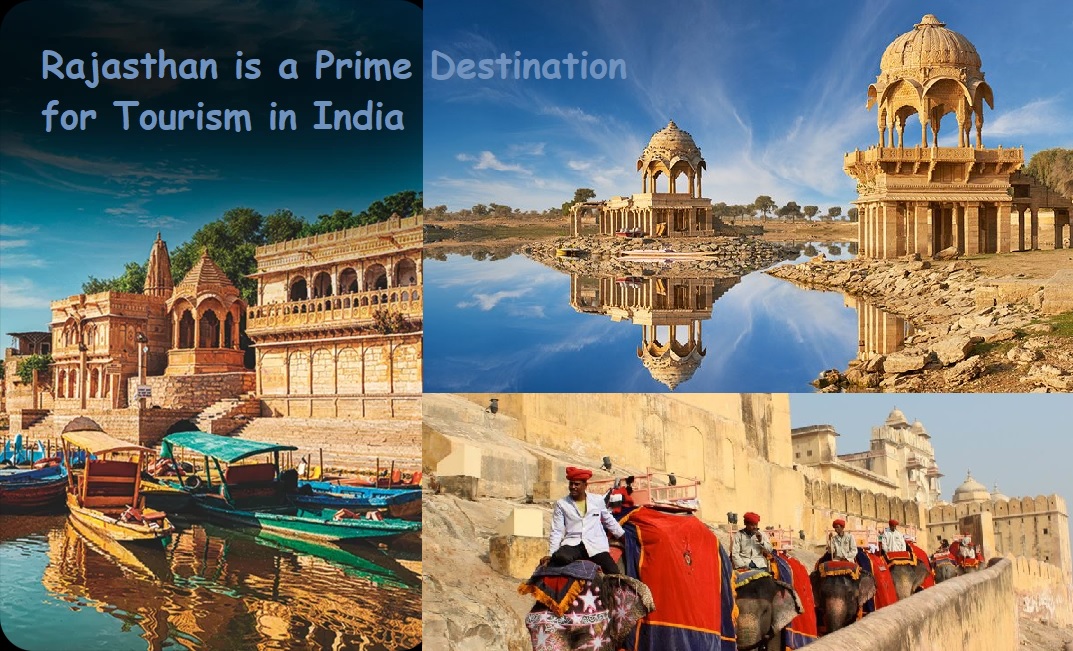Celebrating St. Patrick’s Day: Embracing the Spirit of Ireland

St. Patrick’s Day Celebrations: Embracing the Irish Spirit
St. Patrick’s Day, observed annually on March 17th, is a joyous celebration of Irish culture, heritage, and the patron saint of Ireland, St. Patrick. With its vibrant parades, lively music, and sea of green, St. Patrick’s Day brings people together from all corners of the globe to revel in the spirit of the Emerald Isle. Here’s a comprehensive exploration of the traditions, customs, and festivities that define this beloved holiday:
1. A Global Celebration: While St. Patrick’s Day holds deep roots in Irish history and tradition, it has transcended borders to become a truly global phenomenon. From Dublin to New York City, London to Sydney, cities around the world embrace the Irish spirit with enthusiasm and gusto.
2. Shamrocks and Green Attire: Green is the color of the day, symbolizing Ireland’s lush landscapes and the enduring spirit of St. Patrick. People of all ages don green clothing, accessories, and shamrock decorations to honor their Irish heritage and show solidarity with the festivities.
3. Spirited Parades: St. Patrick’s Day parades are a cornerstone of the celebrations, showcasing a kaleidoscope of colors, music, and culture. Floats adorned with shamrocks, marching bands, traditional Irish dancers, and bagpipers fill the streets, delighting spectators of all ages.
4. Traditional Music and Dance: The sound of traditional Irish music fills the air on St. Patrick’s Day, captivating audiences with its infectious rhythms and soul-stirring melodies. From lively jigs and reels to haunting ballads, Irish music sets the stage for spontaneous dancing and merriment.
5. Culinary Delights: St. Patrick’s Day is a feast for the senses, with traditional Irish cuisine taking center stage. Hearty stews, savory pies, soda bread, colcannon, and corned beef and cabbage are among the culinary delights enjoyed by revelers, accompanied by a pint of Guinness or a dram of Irish whiskey.
6. Cultural Exploration: Beyond the festivities, St. Patrick’s Day offers an opportunity for cultural exploration and education. Museums, libraries, and cultural centers host exhibitions, lectures, and workshops highlighting Ireland’s rich history, folklore, and traditions.
7. Community Gatherings: St. Patrick’s Day brings communities together, fostering a sense of camaraderie and shared heritage. Whether it’s a neighborhood block party, a family gathering, or a pub crawl with friends, the day is an opportunity to connect with others and celebrate Irish culture.
8. Symbol of Unity and Resilience: St. Patrick’s Day serves as a symbol of unity and resilience, celebrating the enduring spirit of the Irish people in the face of adversity. It honors the legacy of St. Patrick, who is credited with bringing Christianity to Ireland and driving out snakes (a metaphor for paganism) from the island.
9. Acts of Generosity: In the true spirit of St. Patrick, many use the day as an opportunity to give back to their communities. Charity events, fundraisers, and volunteer initiatives are organized to support those in need and spread goodwill.
10. Reflection and Remembrance: Amidst the revelry, St. Patrick’s Day also offers a moment for reflection and remembrance. Many take time to honor their Irish roots, pay tribute to loved ones, and remember the contributions of Irish immigrants to society.
St. Patrick’s Day: Celebrating Irish Culture and Heritage
St. Patrick’s Day, observed annually on March 17th, is a beloved holiday celebrated around the world in honor of St. Patrick, the patron saint of Ireland. What began as a religious feast day has evolved into a global celebration of Irish culture, heritage, and identity. From lively parades and vibrant festivities to traditional music, dance, and culinary delights, St. Patrick’s Day is a day filled with joy, camaraderie, and a sea of green. Here’s a closer look at the significance and traditions of this iconic holiday:
Origins and History of St. Patrick’s Day
The origin and history of St. Patrick’s Day are deeply rooted in the life and legacy of St. Patrick, the patron saint of Ireland. While the holiday is now celebrated worldwide with parades, festivities, and the wearing of green, its beginnings are tied to religious observance and Irish culture. Here’s an overview of the origin and evolution of St. Patrick’s Day:
1. Life of St. Patrick:
St. Patrick, whose birth name was Maewyn Succat, was born in Britain in the late 4th or early 5th century. When he was 16 years old, he was seized by Irish pirates and brought to Ireland as a slave. During his captivity, Patrick found solace in his faith and began to embrace Christianity. After six years, he escaped and returned to Britain, where he became a priest and later a bishop.
2. Christian Missionary Work:
Inspired by a vision, Patrick returned to Ireland as a missionary to spread the teachings of Christianity. Over the course of several decades, he traveled throughout the country, converting thousands of people and establishing churches, monasteries, and schools. Legend has it that Patrick used the three-leafed shamrock to explain the concept of the Holy Trinity, thus making it a symbol of Irish identity.
3. Feast Day Celebration:
St. Patrick’s Day originated as a religious feast day commemorating the death of St. Patrick, believed to have occurred on March 17th, around the year 461. The date was chosen to coincide with the traditional death date of the saint and served as an opportunity for Christians to honor his life and contributions to Ireland.
4. Evolution into a Public Holiday:
In Ireland, St. Patrick’s Day was observed as a religious holiday for centuries, marked by church services, feasting, and solemn observances. However, it wasn’t until the 17th century that the holiday began to take on a more secular character. As Irish immigrants spread throughout the world, particularly to the United States, they brought their customs and traditions with them, including the celebration of St. Patrick’s Day.
5. Global Celebration:
Over time, St. Patrick’s Day evolved into a worldwide celebration of Irish culture, heritage, and identity. Parades, festivals, and other festivities became common in cities with large Irish populations, such as New York City, Boston, Chicago, and Dublin. Today, St. Patrick’s Day is celebrated in countries around the globe, with people of all backgrounds joining in the revelry.
6. Modern Traditions:
Modern St. Patrick’s Day celebrations feature a variety of traditions, including parades, concerts, Irish dance performances, and culinary delights. The holiday is also characterized by the wearing of green attire, the display of shamrock decorations, and the consumption of traditional Irish foods and drinks, such as corned beef and cabbage, soda bread, and Guinness.
In conclusion, St. Patrick’s Day has evolved from a religious feast day honoring the patron saint of Ireland into a global celebration of Irish culture and heritage. While its origins are rooted in Christian tradition, the holiday has transcended religious boundaries to become a festive occasion marked by joy, camaraderie, and a shared appreciation for all things Irish.
Conclusion:
In essence, St. Patrick’s Day is a celebration of joy, unity, and the enduring spirit of Ireland. It transcends borders and brings people together in a shared appreciation of Irish culture, heritage, and identity. Whether you’re Irish by birth or Irish at heart, St. Patrick’s Day offers an opportunity to embrace the spirit of the holiday and celebrate the vibrant tapestry of Irish traditions. So, don your green attire, raise a glass, and join in the festivities as we honor the legacy of St. Patrick and the rich heritage of Ireland.
St. Patrick’s Day is more than just a celebration—it’s a testament to the enduring legacy of Irish culture and the indomitable spirit of its people. Through its joyful traditions, spirited festivities, and acts of generosity, St. Patrick’s Day reminds us of the power of unity, resilience, and the enduring legacy of St. Patrick himself. So, whether you’re Irish by birth or Irish at heart, let the spirit of St. Patrick’s Day fill your heart with joy, laughter, and the warmth of shared camaraderie. Sláinte!
Happy St. Patrick’s Day!





